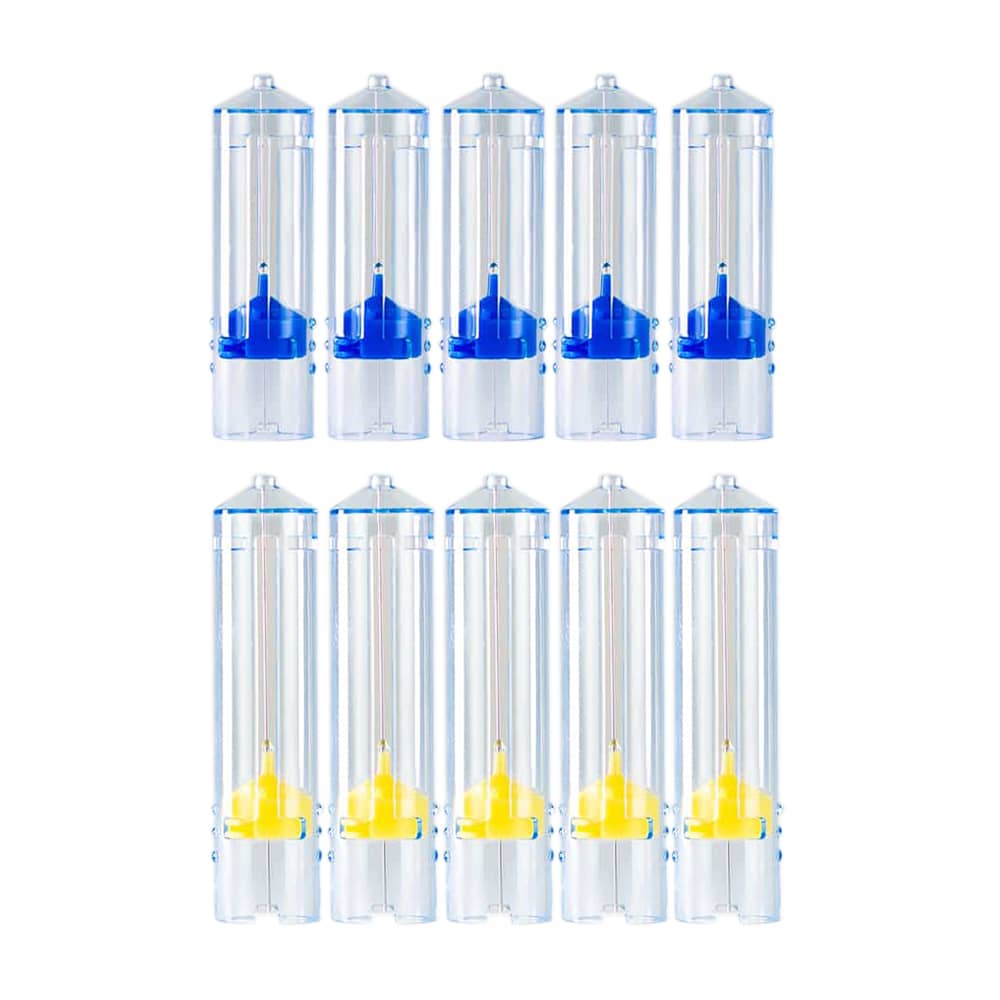Needlesticks injuries (NSI’s) are a serious hazard in a dental office. With assistants and dentists using needles daily, NSI’s generate significant direct, indirect, potential, and intangible costs.
Direct Costs
Waste and wages are the top money losses when it comes to sharps injuries. They’re easily quantifiable and can greatly affect your bottom line. According to an Infection Control Hospital Epidemiology study, the average cost of a needle injury internationally is $747. The average direct costs for each incident ranged from $48 to $1,516, with a median of $425.* Accidental needlesticks are an unwanted financial drain on any practice. Even more troubling, those numbers don’t take into account legal costs, OSHA violations, or the burden of long-term
care for an infected patient.
Indirect Costs
- While they may be hard to quantify economically, there are many intangible costs of sharp injuries. They often have a bigger impact on a practice than ones that come with a price tag. The most significant indirect costs are:
- HCP susceptibility to injury and infection that could lead to Hepatitis B & C and HIV
- Lost productivity in staff; including the time it takes to report and the follow-up treatment for the injury
- Psychological stress on HCW’s, resulting in work loss and post-traumatic stress disorder
- Provider time to evaluate and test a patient, including obtaining consent
- If something goes wrong, a provider’s time to evaluate and treat an employee
- A diversion of personnel resources if more than one provider is involved with a procedure
The Stress of Needlestick Injuries
Needlestick injuries (NSI’s) are a common hazard in every dental practice. The potential health effects are obvious. Not so easy to see are the emotional and psychological consequences. Just as unsettling as the memory of being stuck is the time you have to wait for blood draw results. The uncertainty of infection status after an injury can put healthcare workers in a state of mental unrest. Even if they haven’t contracted a life-threatening illness, that stress can have long-lasting effects.
The Most Common Stress Disorders Associated with NSI’s
The American Psychiatric Association defines Post-traumatic Stress Disorder (PTSD) as a psychiatric disorder that may occur in people who have experienced or witnessed a traumatic event such as a serious accident. The extent of the mental impact of stress varies from person to person but can lead to anxiety and depression.
You might have heard of PTSD before. There’s another less-known affliction that’s found in people overcoming needlestick injuries.It’s called Adjustment Disorder (AD). People with AD can experience symptoms such as stress, feeling sad or hopeless, anxiety, and physical symptoms such as headaches and stomachaches. With AD, it can feel like the reaction is stronger than you expected for the traumatic event you went through.
Offer Emotional Counseling
Whatever degree of stress you or your staff has after a needlestick injury is natural and should be rightfully attended to. Having an environment where no one is ashamed of seeking any medical assistance is critical. Practices’ should offer several ways to receive counseling. Remember, their needlestick trauma has affected them beyond the workplace. Explaining the severe implications of this type of injury to their families has caused additional stress. The sooner you address their mental safety, the better.
The Best Way to Avoid These Costs and Stresses
Get a better needle. Traditional needles lead to all these revenue-depleting and emotionally draining issues. You need something that was created with efficiency and safety in mind: the SimpleCAP needle system. It has a unique, self-contained protective sheath that reduces the risk of needlestick injuries.
Imagine that!
The design of the SimpleCAP system puts the procedure first, making assembly, usage, and disassembly much faster. That means less time wasted. Speaking of less waste, these needles also enter the capsule vertically, which means fewer needles making it into the trash can. It also means you can buy fewer needles in the first place.
So stop needle stick injuries at the point of the procedure with a better needle system. It can significantly reduce the risk of accidental needle sticks, which can save time and money.
For more information, please download these important PDF’s

Ready to Try a Better Needle System?
Unlike traditional needles, the SimpleCAP needle promotes safety during assembly, usage, recapping, disassembly, and disposal. The result is a needle system that makes patients more comfortable, staff safer, and the delivery of care more efficient.













